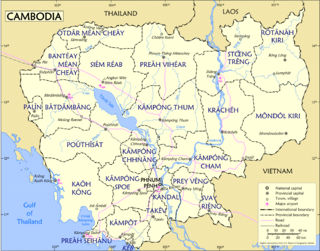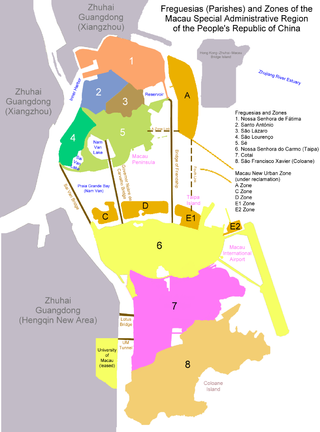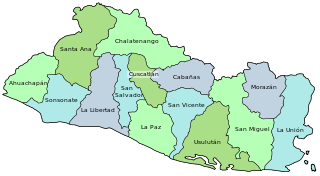Related Research Articles

Commercial Sexual Exploitation of Children (CSEC) defines the “umbrella” of crimes and activities that involve inflicting sexual abuse on to a child as a financial or personal opportunity. Commercial Sexual Exploitation consists of forcing a child into prostitution, sex trafficking, early marriage, child sex tourism and any other venture of exploiting children into sexual activities. According to the Office of Juvenile Justice and Delinquency Prevention, the lack of reporting the crime and “the difficulties associated with identifying and measuring victims and perpetrators” has made it almost impossible to create a national estimate of the prevalence of Commercial Sexual Exploitation of Children in the United States. There is an estimated one million children that are exploited for commercial sex globally; of the one million children that are exploited, the majority are girls.

Sex trafficking is human trafficking for the purpose of sexual exploitation. It has been called a form of modern slavery because of the way victims are forced into sexual acts non-consensually, in a form of sexual slavery. Perpetrators of the crime are called sex traffickers or pimps—people who manipulate victims to engage in various forms of commercial sex with paying customers. Sex traffickers use force, fraud, and coercion as they recruit, transport, and provide their victims as prostitutes. Sometimes victims are brought into a situation of dependency on their trafficker(s), financially or emotionally. Every aspect of sex trafficking is considered a crime, from acquisition to transportation and exploitation of victims. This includes any sexual exploitation of adults or minors, including child sex tourism (CST) and domestic minor sex trafficking (DMST).

Human trafficking and the prostitution of children has been a significant issue in the Philippines, often controlled by organized crime syndicates. Human trafficking is a crime against humanity.
Taiwan is primarily a destination for men, women, and children trafficked for the purposes of forced labor and sexual exploitation. It is also a source of women trafficked to Japan, Australia, the United Kingdom, and the United States. Women and girls from the People's Republic of China (P.R.C.) and Southeast Asian countries are trafficked to Taiwan through fraudulent marriages, deceptive employment offers, and illegal smuggling for sexual exploitation and forced labor. Many trafficking victims are workers from rural areas of Vietnam, Thailand, Indonesia, and the Philippines, employed through recruitment agencies and brokers to perform low skilled work in Taiwan’s construction, fishing, and manufacturing industries, or to work as domestic servants. Such workers are often charged high job placement and service fees, up to $14,000, resulting in substantial debt that labor brokers or employers use as a tool for involuntary servitude. Many foreign workers remain vulnerable to trafficking because legal protections, oversight by authorities and enforcement efforts are inadequate.
Uruguay is a source and transit country for men, women, and children trafficked for purposes of commercial sexual exploitation and forced labor. Most victims are women, girls, and some boys trafficked within the country to border and tourist areas for sexual exploitation. A government agency has found that families had facilitated the exploitation of many children in prostitution. Impoverished parents reportedly turn over their children for domestic and agricultural servitude in rural areas. Some Uruguayan women have been trafficked to Spain and Italy for sexual exploitation. U.S. State Department's Office to Monitor and Combat Trafficking in Persons placed the country in "Tier 2" in 2017.
Vietnam is primarily a source country for women and children trafficked for commercial sexual exploitation and forced labor. Women and children are trafficked to the People’s Republic of China (P.R.C), Cambodia, Thailand, the Republic of Korea, Malaysia, Taiwan, and Macau for sexual exploitation. Vietnamese women are trafficked to the P.R.C., Taiwan, and the Republic of Korea via fraudulent or misrepresented marriages for commercial exploitation or forced labor. Vietnam is also a source country for men and women who migrate willingly and legally for work in the construction, fishing, or manufacturing sectors in Malaysia, Taiwan, P.R.C., Thailand, and the Middle East but subsequently face conditions of forced labor or debt bondage. Vietnam is a destination country for Cambodian children trafficked to urban centers for forced labor or commercial sexual exploitation. Vietnam has an internal trafficking problem with women and children from rural areas trafficked to urban centers for commercial sexual exploitation and forced labor. Vietnam is increasingly a destination for child sex tourism, with perpetrators from Japan, the Republic of Korea, the P.R.C., Taiwan, the UK, Australia, Europe, and the U.S. In 2007, an Australian non-governmental organization (NGO) uncovered 80 cases of commercial sexual exploitation of children by foreign tourists in the Sa Pa tourist area of Vietnam alone.
Indonesia is a source, transit, and destination country for women, children, and men trafficked for the purposes of commercial sexual exploitation and forced labor. The greatest threat of trafficking facing Indonesian men and women is that posed by conditions of forced labor and debt bondage in more developed Asian countries and the Middle East.
Sex trafficking in Thailand is human trafficking for the purpose of sexual exploitation and slavery that occurs in the Kingdom of Thailand. Thailand is a country of origin, destination, and transit for sex trafficking. The sexual exploitation of children in Thailand is a problem. In Thailand, close to 40,000 children under the age of 16 are believed to be in the sex trade, working in clubs, bars, and brothels.
Belgium is a source, destination, and transit country for men, women, and children subjected to trafficking in persons, specifically forced labor and forced prostitution. Victims originate in Eastern Europe, Africa, East Asia, as well as Brazil and India. Some victims are smuggled through Belgium to other European countries, where they are subjected to forced labor and forced prostitution. Male victims are subjected to forced labor and exploitation in restaurants, bars, sweatshops, horticulture sites, fruit farms, construction sites, and retail shops. There were reportedly seven Belgian women subjected to forced prostitution in Luxembourg in 2009. According to a 2009 ECPAT Report, the majority of girls and children subjected to forced prostitution in Belgium originate from Balkan and CIS countries, Eastern Europe, Asia and West Africa ; some young foreign boys are exploited in prostitution in major cities in the country. Local observers also report that a large portion of children trafficked in Belgium are unaccompanied, vulnerable asylum seekers and refugees. Criminal organizations from Thailand use Thai massage parlors in Belgium, which are run by Belgian managers, to sexually exploit young Thai women. These networks are involved in human smuggling and trafficking to exploit victims economically and sexually. Belgium is not only a destination country, but also a transit country for children to be transported to other European country destinations.

Papua New Guinea is a source, destination, and transit country for men, women, and children subjected to trafficking in persons, specifically forced prostitution and forced labor. Women and children are subjected to commercial sexual exploitation and involuntary domestic servitude; trafficked men are forced to provide labor in logging and mining camps. Children, especially young girls from tribal areas, are most vulnerable to being pushed into commercial sexual exploitation or forced labor by members of their immediate family or tribe. Families traditionally sell girls into forced marriages to settle their debts, leaving them vulnerable to involuntary domestic servitude, and tribal leaders trade the exploitative labor and service of girls and women for guns and political advantage. Young girls sold into marriage are often forced into domestic servitude for the husband’s extended family. In more urban areas, some children from poorer families are prostituted by their parents or sold to brothels. Migrant women and teenage girls from Malaysia, Thailand, China, and the Philippines are subjected to forced prostitution, and men from China are transported to the country for forced labor.
Sex trafficking in China is human trafficking for the purpose of sexual exploitation and slavery that occurs in the People's Republic of China. It is a country of origin, destination, and transit for sexually trafficked persons.

Sexual slavery in China is sexual exploitation and slavery that occurs in the People's Republic of China.

Sex trafficking in Cambodia is human trafficking for the purpose of sexual exploitation and slavery that occurs in the Kingdom of Cambodia. Cambodia is a country of origin, destination and transit for sex trafficked persons.
Sex trafficking in the Philippines is human trafficking for the purpose of sexual exploitation and slavery that occurs in the Republic of the Philippines. The Philippines is a country of origin and, to a lesser extent, a destination and transit for sexually trafficked persons.

Sex trafficking in Hong Kong is human trafficking for the purpose of sexual exploitation and slavery that occurs in Hong Kong. Hong Kong is a city of origin, destination, and transit for sexually trafficked persons.

Sex trafficking in Macau is human trafficking for the purpose of sexual exploitation and slavery that occurs in the Macao Special Administrative Region of the People's Republic of China. Macau is predominantly a destination country for sexually trafficked persons.

Sex trafficking in South Korea is human trafficking for the purpose of sexual exploitation and slavery that occurs in the Republic of Korea. South Korea is a country of origin, destination, and transit for sexually trafficked persons. Sex trafficking victims in the country are from South Korea and foreigners.

Sex trafficking in Mongolia is human trafficking for the purpose of sexual exploitation and slavery that occurs in the country. Mongolia is a source, transit and destination country for sexually trafficked persons.
Cybersex trafficking, live streaming sexual abuse, webcam sex tourism/abuse or ICTs -facilitated sexual exploitation is a cybercrime involving sex trafficking and the live streaming of coerced sexual acts and/or rape on webcam.

Sex trafficking in El Salvador is human trafficking for the purpose of sexual exploitation and slavery that occurs in the Republic of El Salvador. It is a country of origin, transit, and destination for sexually trafficked persons.
References
- 1 2 Sothoeuth, Ith (January 24, 2017). "Seven Cambodians Rescued in Sex Trafficking Bust in Japan". VOACambodia.com. Voice of America . Retrieved April 26, 2020.
- 1 2 3 4 5 6 7 8 9 "Why are foreign women continuing to be forced into prostitution in Japan?". The Mainichi . June 10, 2017. Retrieved April 26, 2020.
- 1 2 3 4 5 6 7 Fifield, Anna (May 16, 2017). "For vulnerable high school girls in Japan, a culture of 'dates' with older men". The Washington Post . Retrieved April 26, 2020.
- 1 2 3 Reith-Banks, Tash (June 15, 2019). "Schoolgirls for sale: why Tokyo struggles to stop the 'JK business'". The Guardian .
- 1 2 3 4 5 6 7 8 "Lighthouse NGO Serves as Beacon of Hope for Victims of Sex Trafficking". UW–Madison News. University of Wisconsin–Madison. May 15, 2018. Retrieved April 26, 2020.
- 1 2 3 4 5 6 7 8 9 10 11 12 Campbell, Charlie (October 29, 2019). "The Sexual Exploitation of Young Girls in Japan Is 'On the Increase,' an Expert Says". Time . Retrieved April 26, 2020.
- ↑ "Japanese, Filipino couple sued over child cybersex". Inquirer. September 18, 2015.
- ↑ "Online child sexual exploitation and abuse". UNODC. 2019.
- ↑ McCurry, Justin (17 December 2023). "Host clubs' in Tokyo force women into sex work to pay off huge debts". The Guardian.
- ↑ "'Host crazy' women fall into debt hell through pay-later system". Asahi Shimbun.
- ↑ "Japan". State.gov. United States Department of State. 2014. Retrieved April 29, 2024.
- ↑ "Japan | Global Slavery Index". www.globalslaveryindex.org. Retrieved November 20, 2020.
- ↑ "OHCHR | End of mission statement of the United Nations Special Rapporteur on the sale of children, child prostitution and child pornography, Maud de Boer-Buquicchio, on her visit to Japan". www.ohchr.org. Retrieved November 20, 2020.
- 1 2 3 "Japan". State.gov. United States Department of State. 2020. Retrieved November 20, 2020.
- ↑ Cameron, S & Newman, E n.d., Trafficking of Filipino Women to Japan: Examining the Experiences and Perspectives of Victims and Government Experts, United Nations University, United Nations Global Programme against Trafficking in Human Beings. p.3.
- ↑ Japan NGO Network for CEDAW (JNNC) 2016, NGO Joint Report (Japan) with regard to the consideration of the combined seventh and eighth periodic reports of Japan for the sixty-third session of the Committee on the Elimination of Discrimination against Women, p. 18-20.
- ↑ "Japan". State.gov. United States Department of State . Retrieved November 20, 2020.
- ↑ Council for the Promotion of Measures to Combat Trafficking in Persons 2017, Measures to Combat Trafficking in Persons (Annual Report), Government of Japan, 30 May.